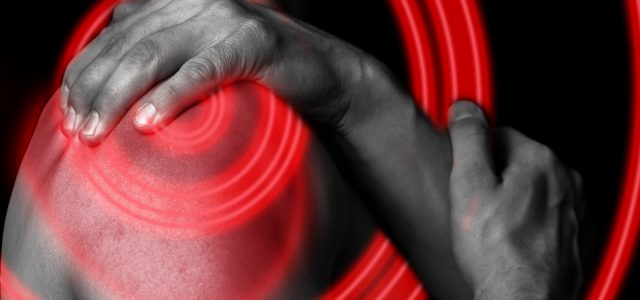
WHEN IS YOUR SHOULDER PAIN
NOT A SHOULDER INJURY?
If you are suffering from shoulder pain, a competent diagnosis is essential for effective treatment and recovery, explains expert Jane Connolly of Whalley Physio
Most shoulder pain results from injury or pathology in the shoulder itself.
The pain is usually characterised as a dull ache with specific, recognisable distributions over the shoulder itself or down the arm as far as the elbow.
Night-time aching and sleep disturbance are common features of rotator cuff pathology, as is painful arm abduction (taking your arm away from the side of the body) reaching overhead or behind your back.
However, sometimes all is not as it seems and shoulder pain stems from a problem in the neck. There are eight nerve roots branching from each side of the cervical vertebrae in the neck, C1-C8. Nerve roots C3 through to C8 all pass down through specific parts of the shoulder and compression or irritation of them can cause pain and symptoms that radiate along the path of the nerve into the shoulder, arm and/or hand because the brain can’t always trace the pain pathway back to its source. This referred pain is known as cervical radiculopathy.
It often presents as an electric-like, stabbing, burning or tingling pain that can radiate from the neck to the shoulder blade and, unlike shoulder originating pain, down past the elbow sometimes into the hand. Head positions in sitting and looking down can aggravate the pain but equally tilting the head away from the painful side or lifting the arm above the head to ease tension on the nerve may relieve it. Any weakness or numbness in the shoulder or arm usually suggests a neck involvement.
As a general guideline, a history of trauma, not always immediately, and localised pain where you can pinpoint a specific area of discomfort, tends to be due to pathology of local structures in the shoulder, whereas pain that is diffuse and difficult to describe tends to be radicular pain from the neck. A physiotherapist will take a medical history and do a clinical examination to support a proper diagnosis to ascertain where the pain or movement limitations are coming from.
A competent diagnosis is essential for effective treatment as the approach differs depending on the source of the pain. Stiffness and pain due to a capsulities (frozen shoulder) or rotator cuff injury would be treated more vigorously with exercises to stretch and strengthen muscular inadequacies around the shoulder itself, whereas a neck problem requires care not to aggravate the sensitive nerves whilst restoring movement and function.
www.whalleyphysiotherapy.co.uk

